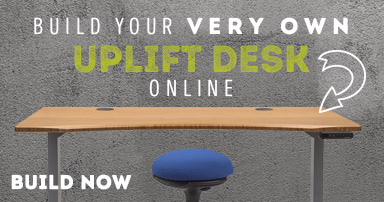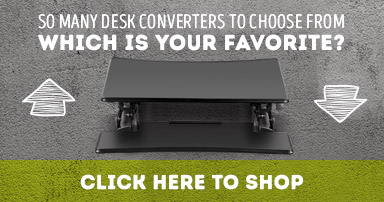Ergonomic chairs – Does more money get you more?
Posted by Professor Ergo on Jan 1st 2009
Budget is on everyone’s mind these days so how much you need to spend to get a decent chair is a question we see a lot. Many people are used to shopping for chairs in “big box” office stores, where prices are low but so is the quality. Comfort and durability are rare in such circumstances, as are the features that make a chair suitable for a 40 or more hour work week.
As a general statement, decent ergonomic chairs that are suitable for a 40 hour week start around $300; decent offerings under that price range are rare. Differences that you’ll see in a more expensive chair (noting officially that price is not a guarantee of better…so my comments here are in reference to chairs built to ergonomic standards):
1. The actual function of the chair - how many places it can be adjusted to fit the user. In addition to features such as rocking which isn’t required but is common, a truly ergonomic chair offers:
* adjustable height * back angle adjustment * tension adjustment unless the chair is counterbalanced by user’s weight such as Humanscale’s Freedom andLiberty chairs * seat depth adjustment * lumbar support * either the back is height adjustable (so you can move a fixed lumbar into the correct position) or has an adjustable height lumbar support * height adjustable arms
2. Fit matters too. A chair that doesn’t fit is the wrong chair regardless of price. A seat that is too wide or narrow, or too deep or shallow, will not be comfortable for long hours. 2. Seat contour and the quality of foams used. Cheaper foam breaks down faster and doesn’t distribute your weight as well. A well contoured seat is more comfortable for long hours. Also a lot of ergonomic chairs offer a waterfall seat so that when the seat moves up as you rock back (most ergonomic chairs do this but not all) the seat doesn’t push against the back of your thighs causing discomfort. 3. Ease of adjustment. Some less expensive chairs require a helper to really adjust properly, they don’t easily adjust from the seated position. This is not a bad trade off if you’re the only user of the chair. 4. Overall construction quality, quality of materials, etc. 5. More expensive chairs often have customizable features that may include a choice of textiles, frame finishes, different kinds of arms, casters for different surfaces, and sometimes other comfort options such as memory foam, gel cushions, different types of lumbar supports, etc. and often coordinating chairs so you can outfit an entire office and maintain the same look.
Our three lowest priced chairs that meet this standard are the Eurotech Apollo MT9400 (under $200), the 4 X 4 Slider FM498SL (under $300), and the Mayline 4021 (under $300).
Bump the budget a tad and you move into the arena where chairs offer more customization and significantly higher quality construction. My two favorites in the under $500 range are the Via Riva, which is available in two different back styles, 3 seat sizes and a host of options that can accommodate your entire office and it starts under $400, and the Steelcase Amia which is very comfortable and offers the unique advantage of arms that double pivot so you can actually move the arms next to your body, then pivot them out so your shoulders remain fully relaxed and your arms supported while typing. This can make a big difference in comfort if you type all day, and especially if you are experiencing any sort of shoulder, upper back, neck, arm, wrist or hand problems. TheAmia also fits a wider range of bodies than most chairs. The Steelcase Amia starts under $500.




